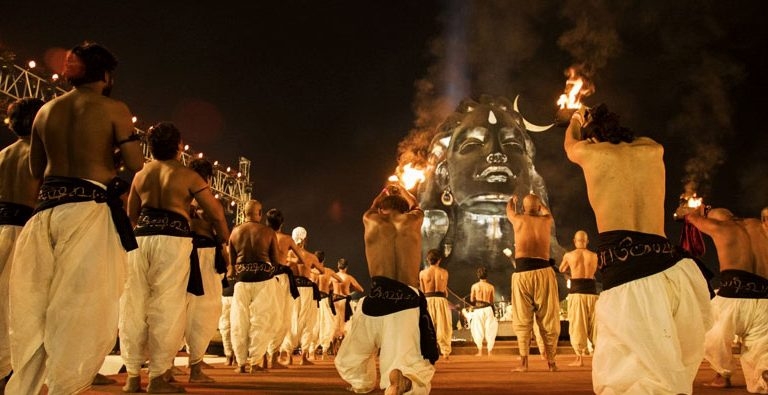Mahashivratri, also known as the Great Night of Shiva, is a sacred Hindu festival celebrated with immense devotion and fervor. This auspicious occasion holds deep significance in Hindu culture, marking the convergence of divine energies and symbolizing the triumph of good over evil. Let’s delve into the mystical realm of Mahashivratri and explore its traditions, rituals, and spiritual essence.
1. What is Mahashivratri?
Mahashivratri, literally translating to “The Great Night of Shiva,” is a Hindu festival celebrated annually in honor of Lord Shiva. It falls on the 14th day of the dark fortnight in the month of Phalgun according to the Hindu lunar calendar, typically in February or March. This night is believed to be particularly auspicious for spiritual practices and seeking the blessings of Lord Shiva.
2. Legends and Mythology
The festival of Mahashivratri is steeped in ancient mythology and legends. According to one popular legend, this is the night when Lord Shiva performed the divine dance of creation, preservation, and destruction, known as the Tandava. Another legend narrates the story of Shiva consuming poison to save the universe during the churning of the ocean (Samudra Manthan), which turned his throat blue and earned him the epithet “Neelkanth” (the one with a blue throat).
3. Significance of Mahashivratri
Mahashivratri holds profound significance for devotees of Lord Shiva. It is believed that sincere prayers and devotion on this night can lead to the forgiveness of past sins, liberation from the cycle of birth and death (moksha), and attainment of spiritual enlightenment. It is also considered an opportune time for seeking blessings for marital harmony, fertility, and overall well-being.
4. Observances and Rituals
Devotees observe Mahashivratri by fasting, performing elaborate rituals, and offering prayers to Lord Shiva. The day typically begins with devotees taking a ritual bath (abhishekam) of Shiva Lingam, a symbolic representation of Lord Shiva. Throughout the day, devotees visit temples, chant sacred mantras, and participate in religious ceremonies.
5. Fasting and Meditation
Fasting is a common practice during Mahashivratri, with many devotees abstaining from food and water for the entire day and night. Fasting is believed to purify the body and mind, allowing devotees to focus their energy on spiritual pursuits. Additionally, meditation and introspection are encouraged to delve deeper into one’s inner self and connect with the divine presence of Lord Shiva.
6. Nightlong Vigil
One of the most distinctive features of Mahashivratri is the nightlong vigil (jagran) observed by devotees. Temples remain open throughout the night, with devotees staying awake and engaged in continuous prayers, bhajans (devotional songs), and meditation. The atmosphere is charged with spiritual fervor as devotees immerse themselves in the divine energy of Lord Shiva.
7. Cultural Celebrations
Apart from its religious significance, Mahashivratri is also celebrated with cultural fervor across India. Various cultural programs, musical performances, and dance recitals depicting the life and teachings of Lord Shiva are organized in different parts of the country. The festival serves as a platform for promoting cultural unity and harmony among people of diverse backgrounds.
8. Symbolism and Spirituality
Mahashivratri is rich in symbolism and spiritual significance. The image of Lord Shiva, adorned with serpents and seated in deep meditation, symbolizes inner peace, tranquility, and detachment from worldly desires. The ritual of offering bilva leaves, water, milk, and honey to the Shiva Lingam represents the offering of one’s devotion and surrender to the divine.
9. Mahashivratri Across India
While Mahashivratri is celebrated with great zeal throughout India, certain regions have their unique customs and traditions associated with the festival. In states like Uttar Pradesh, Madhya Pradesh, and Maharashtra, devotees throng to famous Shiva temples such as Kashi Vishwanath, Mahakaleshwar, and Bhimashankar, respectively, to seek the blessings of Lord Shiva.
10. Embracing Mahashivratri in the Modern World
In today’s fast-paced world, Mahashivratri continues to hold relevance as a source of spiritual inspiration and renewal. Many people, irrespective of their religious beliefs, participate in the festivities and embrace the spirit of unity, compassion, and introspection that Mahashivratri embodies. It serves as a reminder of the timeless wisdom and eternal truths that transcend cultural boundaries.
Disclaimer : इस न्यूज़ पोर्टल को बेहतर बनाने में सहायता करें और किसी खबर या अंश मे कोई गलती हो या सूचना / तथ्य में कोई कमी हो अथवा कोई कॉपीराइट आपत्ति हो तो वह [email protected] पर सूचित करें। साथ ही साथ पूरी जानकारी तथ्य के साथ दें। जिससे आलेख को सही किया जा सके या हटाया जा सके ।














